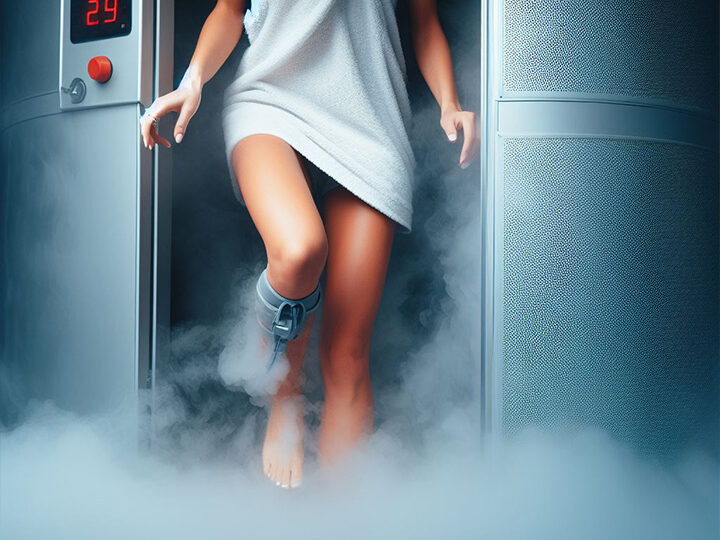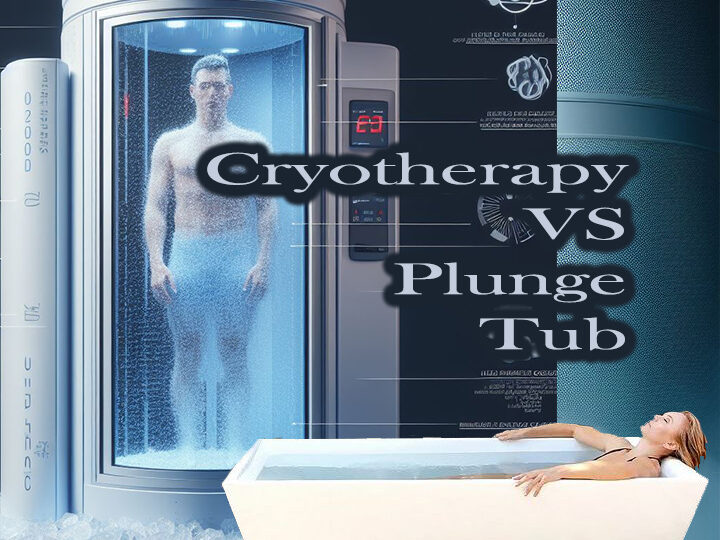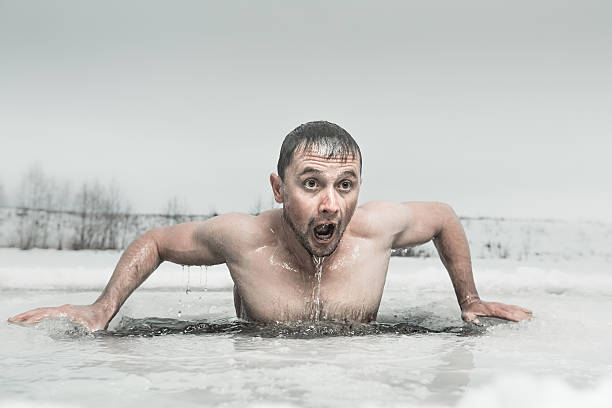
Chilling Path to Victory: The Science Behind Why Athletes Should Embrace Ice Baths for Peak Performance
In the relentless pursuit of athletic excellence, athletes are constantly seeking innovative methods to enhance their performance and accelerate recovery. Among these methods, ice baths have emerged as a powerful to aid in recovery. It also has the potential to elevate an athlete’s performance to new heights. In this comprehensive guide, we will investigate the science behind ice baths, exploring how this cold therapy can be a significant change for athletes aiming for the podium.
The Power of Cold Therapy
Cold therapy, specifically in the form of ice baths, has gained significant traction in the world of sports. This ancient practice draws its roots from the concept of cryotherapy, where exposure to extreme cold triggers a range of physiological responses that can have profound benefits for athletes.
Muscle Recovery and Reduced Inflammation
After intense training sessions or competitions, muscles often undergo microscopic damage. This damage triggers inflammation and soreness. Ice baths, by inducing vasoconstriction, help in minimizing the inflammatory response. Cold temperatures restrict blood vessels. This limits the influx of inflammatory cells and reduces swelling. This accelerates the healing process and allows athletes to bounce back faster.
Faster Lactic Acid Clearance
Lactic acid buildup is a common aftermath of rigorous physical activity. Accumulated lactic acid contributes to muscle fatigue and soreness. Cold exposure from ice baths aids in clearing out lactic acid more efficiently. This cold contributes to quicker recovery between training sessions and events.
Enhanced Circulation and Blood Flow
Contrast baths, a technique involving alternating between hot and cold water, can help enhance circulation. Cold water causes blood vessels to constrict, pushing blood back to the core. When athletes switch to warm water, blood vessels dilate,flushing out waste products and delivering oxygen-rich blood to muscles. This cyclic process can rejuvenate tired muscles and promote tissue repair.
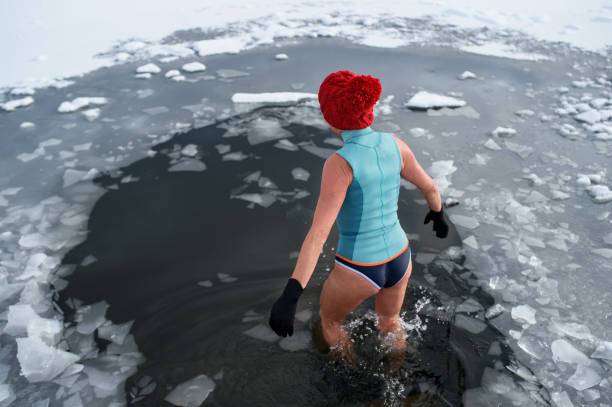
Pain Management and Endorphin Release
Athletes often face pain due to injuries or intense workouts. Ice baths can function as a natural painkiller by numbing nerve endings and triggering the release of endorphins. These are our body’s feel-good hormones. This dual effect not only alleviates pain but also contributes to an improved psychological state.
What is the ideal time to sit inside the ice bath?
The duration of an ice bath for an athlete can vary based on individual preferences. The specific sport or activity and the athlete’s level of experience with cold therapy plays a role in the decision-making process. It’s essential to strike a balance between reaping the benefits of the ice bath and avoiding potential risks associated with prolonged exposure to cold temperatures. Here are some general guidelines to consider:
Start with Short Sessions: If the athlete is new to ice baths, it’s advisable to start with shorter sessions to allow their body to acclimate to the cold. Begin with small amounts of time and gradually increase the duration as the athlete becomes more accustomed to the cold sensation. Target between 8-10 minutes inside the ice bath.
Progress Gradually: As the athlete gets more comfortable with ice baths, the duration can be gradually extended. Aim for sessions lasting longer over time.
Monitor Comfort Levels: Pay attention to how the athlete feels during the ice bath. Discomfort, shivering, or a feeling of numbness are signs that it might be time to end the session. The goal is to provide the benefits of cold therapy without subjecting the body to excessive cold stress.
Consider the Temperature: The temperature of the ice bath water also plays a role in determining the duration. Generally, temperatures around 10-15°C (50-59°F) are recommended for ice baths. If the water is colder, shorter durations might be appropriate to prevent discomfort or potential cold-related issues.
Individual Factors: Each teen athlete’s tolerance for cold and recovery needs can vary. Some athletes might find that they benefit from slightly longer sessions, while others might achieve their goals with shorter ones. It is essential to customize the approach based on the athlete’s responses and feedback.

Consult a Professional: Before incorporating ice baths into a teen athlete’s routine, it’s advisable to consult with a qualified coach, sports medicine professional, or healthcare provider. They can provide personalized guidance based on the athlete’s specific needs, health considerations, and training regimen.
Post-Activity Timing: For post-activity recovery, consider having the ice bath within the first few hours after intense training or competition when muscle damage and inflammation are most pronounced.
What is the appropriate time for a teen athlete to sit in the ice bath?
The recommended time for a teen athlete to sit in an ice bath is 3-8 minutes. This is the amount of time that has been shown to be effective in reducing pain and inflammation, while minimizing the risk of hypothermia.
It is important to start with a shorter time for younger athletes. Three minutes may be a good place to start and gradually increase the time as you get used to it. If you start to feel cold or uncomfortable, get out of the ice bath immediately.
Remember that the primary goal of an ice bath is to provide therapeutic benefits without causing harm. If the athlete experiences severe discomfort, shivering that doesn’t subside, or any concerning symptoms, the ice bath should be discontinued immediately.
The duration of an ice bath for a teen athlete should be based on a combination of factors, including their experience with cold exposure, individual comfort levels, and guidance from qualified professionals. This is not a one size fits all approach.
How many times per week should a teen athlete take an ice bath?
The frequency of ice bath sessions for teen athletes should be carefully considered to ensure that the athlete gains the benefits of cold therapy while avoiding overexposure or potential negative effects. Here are some guidelines to help determine how many times per week a teen athlete should take an ice bath.
Listen to the Body: The athlete’s body and recovery needs should be the primary guide. Pay attention to how the athlete responds to ice baths. If they experience significant discomfort, excessive shivering, or prolonged numbness, it might be a sign that the frequency needs to be adjusted.
Balance with Training Load: The frequency of ice baths should be aligned with the athlete’s training intensity and volume. If the athlete has had an exceptionally intense training session or competition, an ice bath might be more beneficial. On lighter training days, or during active recovery periods, the athlete might not need ice baths as frequently.
Start Gradually: If the athlete is new to ice baths, it’s a good idea to start with one session per week. You can gradually increase the frequency as the athlete becomes more accustomed to the cold exposure.
Consider Sport-Specific Factors: Different sports have varying demands on the body. Athletes in high-impact or endurance sports might find ice baths more beneficial and could incorporate them more frequently than athletes in lower-impact sports.
Individual Recovery Needs: Each athlete’s recovery needs can differ. Some athletes might find that they benefit from ice baths more frequently, while others might not need them as often. Factors such as age, training history, and overall health can influence recovery rates.
Consult Professionals: It’s essential to consult with coaches, trainers, and healthcare professionals. The athlete’s training regimen and recovery requirements should be custom tailored to each athlete. They can provide personalized recommendations based on the athlete’s individual needs and goals.
Avoid Overuse: While ice baths can be effective, overusing them could potentially blunt the body’s natural adaptation to stress and cold exposure. This could impact the body’s ability to recover naturally.
Consider Other Recovery Methods: Ice baths are just one tool in the recovery toolbox. Encourage the teen athlete to explore other recovery methods. Diversification is usually king. Focus on proper nutrition, hydration, sleep, stretching, and foam rolling.
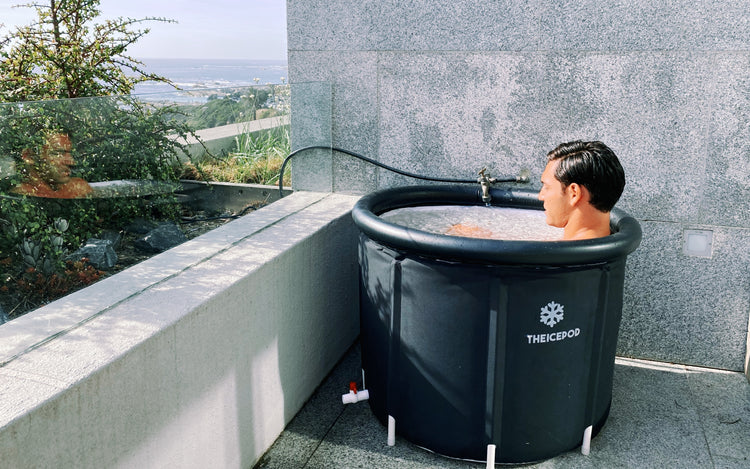
How long do you have to get in an ice bath after the impact of an injury?
The timing of getting into an ice bath after an injury is an important consideration. Cold therapy can provide benefits in managing pain and inflammation. The decision should be based on the severity and type of injury. Individual preferences and medical guidance should prevail. Here are some general guidelines.
- Acute Injuries: For acute injuries, which occur suddenly and involve tissue damage, the R.I.C.E. principle is often followed: Rest, Ice, Compression, and Elevation. In this context, ice can be applied to the injured area as soon as possible after the injury occurs. This is typically within the first 48 hours.
Timing: Apply ice as soon as you can after the injury, ideally within the first 20-30 minutes.
Duration: Apply ice for about 15-20 minutes at a time. Allow the skin to return to normal temperature before reapplying ice.
- Consultation: It’s important to consult a healthcare professional before using ice therapy, especially for injuries. They can provide specific guidance based on the nature and severity of the injury. Some injuries might benefit more from other forms of immediate care, such as immobilization or seeking medical attention.
- Balance Cold and Heat: In some cases, using heat therapy (such as warm compresses) can be beneficial after the initial acute phase (first 48 hours). Heat can help relax muscles and improve blood flow. Heat will sometimes aid in the healing process. Cold therapy can still be used later in the recovery process to manage ongoing inflammation and pain.
- Individual Response: Individual responses to cold therapy can vary. Some people might find immediate relief from applying ice. Other people might have more sensitivity to cold. Pay attention to how the injured area responds to cold exposure.
- Avoid Frostbite: While ice therapy can be beneficial, it’s crucial to avoid prolonged exposure to extreme cold. This could lead to frostbite or other cold-related issues. Always place a cloth or barrier between the ice and the skin to prevent direct contact and monitor the skin’s response.
- Continue Medical Care: While ice therapy can help manage pain and inflammation, it’s not a substitute for proper medical evaluation and treatment. If the injury is severe or not improving, seek professional medical care.
In summary, getting into an ice bath or using ice therapy immediately after an injury is typically recommended within the first 48 hours. Following the R.I.C.E. principle is a strong philosophy. On the other hand, individual circumstances and medical advice should always be taken into consideration. Always consult a healthcare professional for personalized guidance on using cold therapy for injuries.
Can an ice bath help middle aged non athletes in their daily lives?
Yes, ice baths can offer benefits to middle-aged individuals who are not athletes and are seeking ways to improve their daily lives. The benefits might differ slightly from those experienced by athletes. Cold therapy can still provide advantages for overall well-being. Here are ways in which ice baths can help middle-aged non-athletes:
Pain Relief and Inflammation Reduction: Middle-aged individuals often experience general aches and pains due to age-related changes, sedentary lifestyles, or minor injuries. Ice baths can help reduce inflammation and provide pain relief by constricting blood vessels and numbing nerve endings in the affected areas.
Stress Reduction and Mood Enhancement: Exposure to cold temperatures triggers the release of endorphins. These are our natural mood enhancers. Ice baths can help middle-aged individuals manage stress, improve mood, and promote a sense of relaxation.
Improved Circulation: Cold exposure can stimulate blood circulation. This can benefit people who spend a lot of time sitting or have circulation-related concerns. Better circulation can contribute to improved overall health and reduced risk of cardiovascular issues.
Boosted Immune System: Cold therapy has been suggested to have potential immune system benefits, such as increasing the activity of immune cells. A stronger immune system can be beneficial in warding off illnesses and infections.
Energy and Alertness: Cold exposure can increase alertness and energy levels due to the body’s response to cold stress. This can be particularly helpful for middle-aged individuals who are looking for a natural way to combat midday slumps or fatigue.
Skin Health: Cold therapy, including ice baths, can have positive effects on skin health by promoting better blood circulation and potentially improving the appearance of skin tone and texture.
Improved Sleep: Cold therapy has been linked to better sleep quality. Taking an ice bath before bedtime might help middle-aged individuals achieve a more restful night’s sleep.
Metabolic Benefits: Cold exposure has been shown to stimulate the metabolic rate and might contribute to weight management efforts.
It’s important to note that middle-aged individuals, especially those with pre-existing medical conditions, should consult with a healthcare professional before incorporating ice baths or any other form of cold therapy into their routine. Proper guidance and monitoring ensure that cold therapy is safe and appropriate for individual health profiles.
When considering ice baths for non-athletes, shorter exposure times and milder temperatures can be used compared to what athletes might use. This helps avoid excessive cold stress while still providing the benefits of cold therapy. As always, moderation and personalized approaches are key to making the most of any wellness practice.
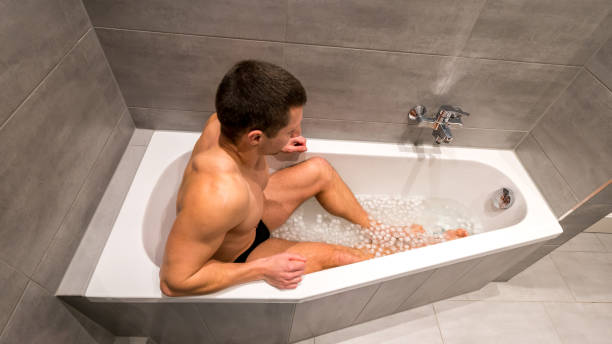
Does an ice bath help your body get better sleep?
Ice baths can potentially contribute to better sleep through various physiological and psychological mechanisms. While the direct link between ice baths and improved sleep is not fully understood, there are several ways in which cold exposure might positively impact sleep quality.
Temperature Regulation: The body’s core temperature naturally drops during sleep as part of the sleep-wake cycle. Cold exposure from an ice bath before bedtime might help facilitate this drop in temperature. This signals to the body that it’s time for sleep. The subsequent warming of the body after exiting the cold water can mimic the body’s natural temperature changes during the night.
Endorphin Release: Cold exposure triggers the release of endorphins, which are neurotransmitters that promote relaxation and reduce stress. This endorphin release can have a calming effect on the mind and body. This should make it easier to transition into a restful state before sleep.
Reduced Stress and Anxiety: Ice baths can help lower levels of the stress hormone cortisol. By reducing cortisol levels, individuals might experience a decrease in anxiety and an improved ability to unwind before bedtime. This should lead to a more peaceful sleep.
Muscle Relaxation and Pain Relief: Cold therapy can alleviate muscle tension, soreness, and pain. This can contribute to physical relaxation before sleep. When muscles are relaxed and free from discomfort, falling asleep and staying asleep can be more manageable.
Improved Circulation: Cold exposure can improve blood circulation. This may facilitate nutrient delivery to muscles and tissues. This improved circulation could aid in muscle recovery and relaxation, leading to better sleep quality.
Enhanced Parasympathetic Nervous System Activity: Exposure to cold can activate the parasympathetic nervous system. This is often referred to as the “rest and digest” system. This activation can counteract the effects of the sympathetic nervous system (the “fight or flight” response), promoting a calm and relaxed state conducive to sleep.
Mindfulness and Relaxation: The act of taking an ice bath and fully engaging in the experience can be a form of mindfulness and relaxation. Engaging in a deliberate self-care ritual can prepare the mind for a more peaceful and restful night’s sleep.
It’s important to note that individual responses to cold exposure and its effects on sleep can vary. Some people might find that ice baths improve their sleep quality. Others might not experience a significant change. If you’re considering using ice baths as a potential tool to improve sleep, it’s a good idea to incorporate them into your evening routine and observe how they affect your overall sleep patterns over time.
Here are some things you should do when you get out of an ice bath:
Dry off immediately. The cold water can make you more susceptible to hypothermia, so it’s important to dry off as soon as possible.
Warm up your body. You can do this by taking a warm shower or bath, or by using a heating pad or hot water bottle.
Drink plenty of fluids. The cold water can dehydrate you. It is important to drink plenty of fluids after an ice bath.
Eat a warm meal. This will help to replenish your energy stores and warm you up from the inside out.
Get some rest. Your body needs time to recover from the ice bath. It is important to get some rest.
Avoid taking a hot shower or bath immediately after an ice bath. This can shock your body and cause blood vessels to constrict, which can lead to hypothermia.
Do not take an ice bath if you have any health conditions, such as heart disease or diabetes.
If you experience any adverse effects after taking an ice bath, such as dizziness, nausea, or vomiting, get out of the ice bath immediately and seek medical attention.
Are there are some major differences between economical ice baths and expensive ice bath products?
Short answer, YES.
Cost: Economical ice baths are typically much cheaper than expensive ice bath products. A large plastic bin or storage container can be used to create an economical ice bath. The only other cost is the ice. Expensive ice bath products can cost hundreds or even thousands of dollars.
Durability: Expensive ice bath products are typically made of more durable materials. These materials may be stainless steel or acrylic. This makes them more likely to last longer than economical ice baths, which are often made of plastic.
Features: Expensive ice bath products often have more features than economical ice baths. For example, they may have built-in seating, temperature controls, or filtration systems.
Convenience: Expensive ice bath products are often more convenient to use than economical ice baths. For example, they may have a self-circulating pump that keeps the water at a consistent temperature.
Ultimately, the best type of ice bath for you will depend on your budget, needs, and preferences. If you are looking for a cheap and simple option, an economical ice bath is a good choice. If you are looking for a more durable and feature-rich option, an expensive ice bath product is a better choice.
My final chilling thought
In the relentless pursuit of excellence, athletes are no strangers to pushing their bodies to the limit. Their bodies are always trying to reach peak performance. It is not always about training harder, sometimes it’s about training smarter. Do your research, use technology. This is what gets us to the next level. Ice baths have emerged as a scientifically sound and accessible tool that can significantly contribute to every athlete’s recovery. No athlete is paining free forever. By harnessing the power of cold therapy, athletes can accelerate muscle recovery, reduce inflammation, and gain a competitive edge. With a well-structured ice bath protocol, athletes have the potential to unleash their full potential on the field, track, or court. Science will continue to unveil the intricacies of cold therapy. Embracing the chill could very well be the path to victory that athletes have been searching for.

